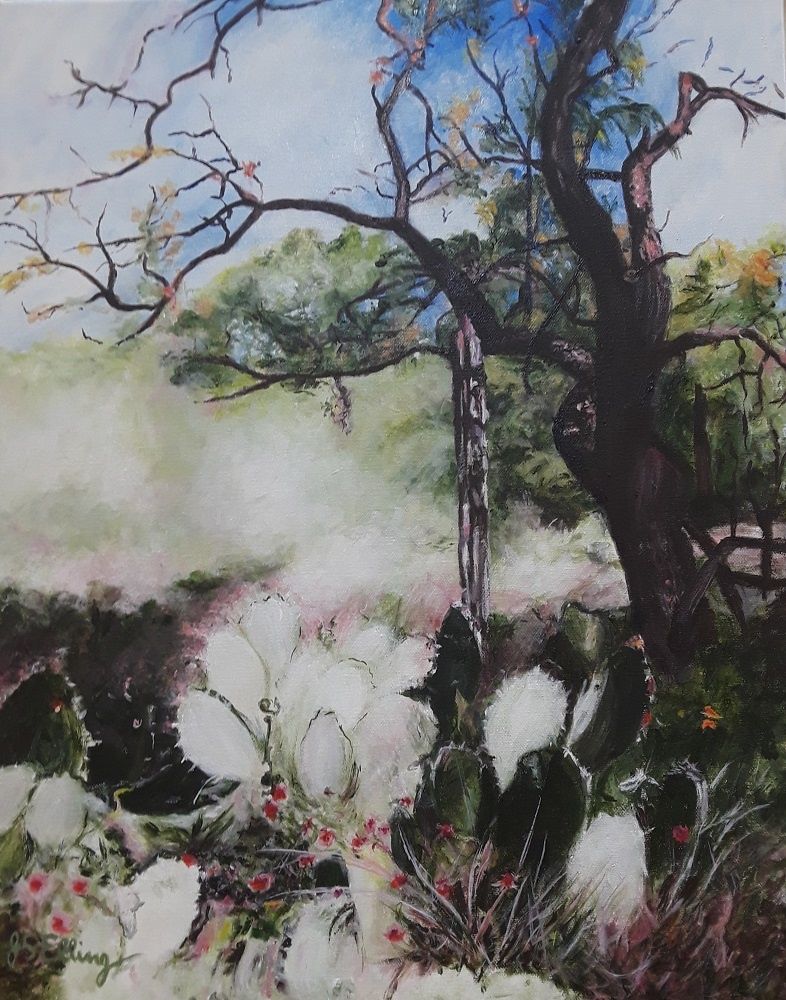J S Ellington
Added Aug 1, 2018
HOW TO CARE FOR YOUR ACRYLIC PAINTING
 I prefer to work with water-soluble acrylics for the sake of my allergies and because they have a shorter drying time than oils, allowing me to paint continuously while I am “in the zone.” I use Liquitex Heavy Body Acrylics because of their high quality and versatility. They are extremely flexible, they are non-yellowing, they are water resistant, and once they are dry, they resist marring and scratching.
I prefer to work with water-soluble acrylics for the sake of my allergies and because they have a shorter drying time than oils, allowing me to paint continuously while I am “in the zone.” I use Liquitex Heavy Body Acrylics because of their high quality and versatility. They are extremely flexible, they are non-yellowing, they are water resistant, and once they are dry, they resist marring and scratching.
I have listed below a few ideas to help you care for your acrylic painting so that it stays clean and bright.
*I am aware that most of my customers are budget wise, and that is important to me. That is why my original artwork is shipped ready to hang so that framing is not necessary.
Gallery wrapped canvas has a modern look when hung without a frame due to its 1-1/2-inch-wide edges. Even when I use a stretched canvas with only half-inch edges, I paint them so that they look fine when hung without a frame.
Since I use only high-quality acrylic paints and finish with Liquitex Gloss Medium and Varnish for acrylics. It is not necessary to protect my paintings with glass, because these products protect my acrylic original paintings from scratches, sunlight and dust. The varnish also makes the colors pop and gives the surface a sheen that I love. The varnish also makes the artwork easier to clean.
I don’t prefer the look of any original painting when seen through glass due to added glare. The only time I recommend glass is to protect the layers of collages and prints on fine art paper due to their tendency to degrade with exposure to moisture and the difficulty of keeping them clean if hung without a frame and glass.
*Original paintings, especially if they have subtle color nuances, need good light when displayed. Indoor soft lights directed at the painting or indirect light from a window are best. Even though the varnish resists damage from UV light, it is only reasonable to protect your painting from direct sunlight. Years of harsh exposure may eventually have an effect.
*My original acrylic paintings are created with high contrast. With time, dirt, dust, and oils can collect on the surface, possibly causing the visual contrast to be decreased. Therefore, it is important to keep the surface clean.
To clean, gently brush the surface with a clean natural-bristle brush (such as one used to apply loose face powder). Then gently wipe with a damp soft cloth or towel, working in small circles over the canvas.
Do not use solvents such as ammonia, bleach, alcohol or turpentine. They will damage your painting.
*If your painting ever leans against an uneven surface for a time, it could develop a dent or stretched-out spot. Good old hot water, applied with a paint brush to the back side of the canvas where the dent is will allow the canvas to tighten up, making the dent disappear. I even use this method when I feel that a canvas is not stretched tightly enough onto its stretcher bars, and to be honest, I have even had success with a squirt of cold water to the canvas back, applied with a spray bottle. Voila! It tightens right up.
*With a little care, your collection of acrylic paintings will be archival, remaining bright and beautiful over the years so that you can pass it on to the next generation of art lovers.